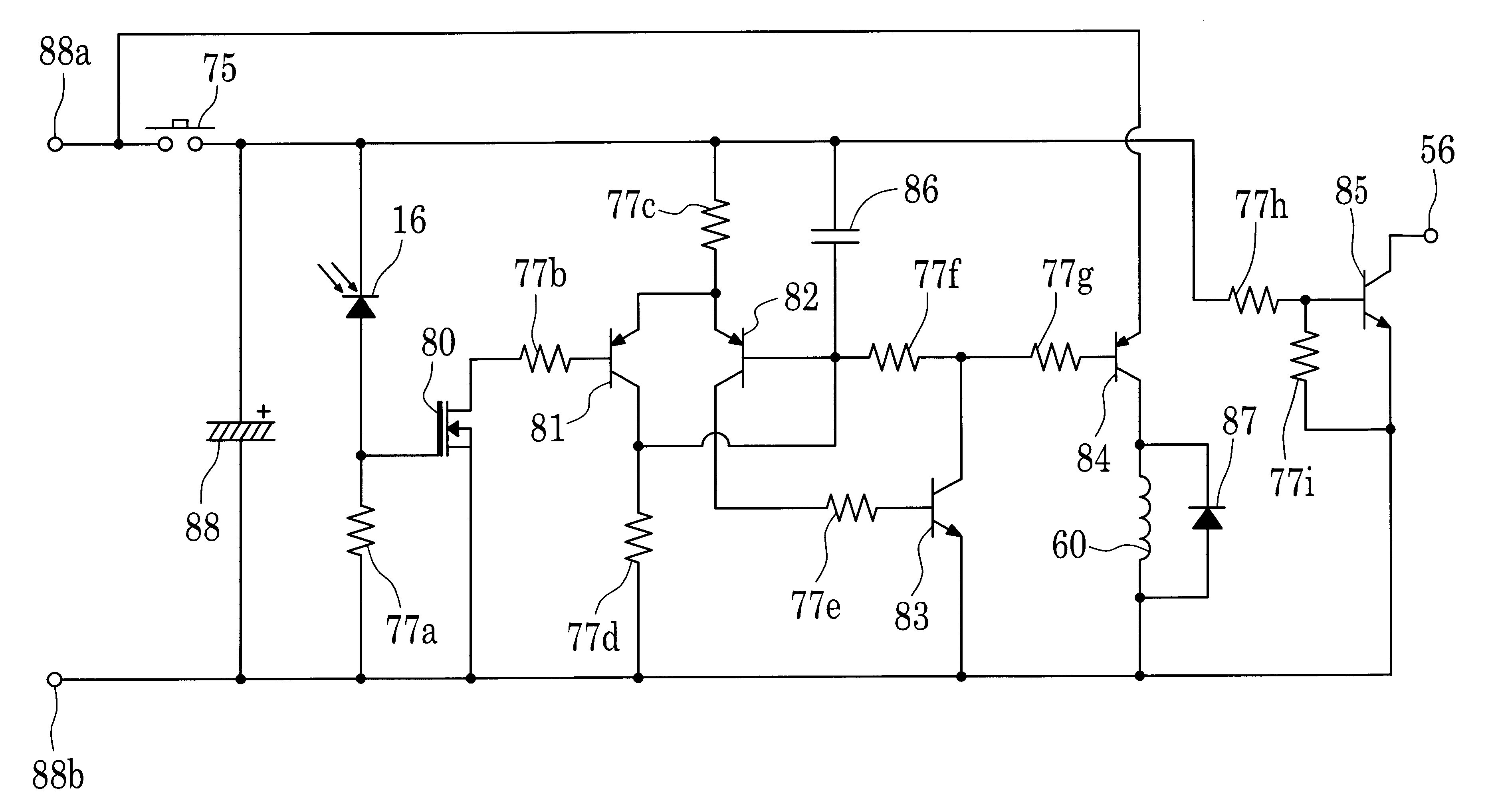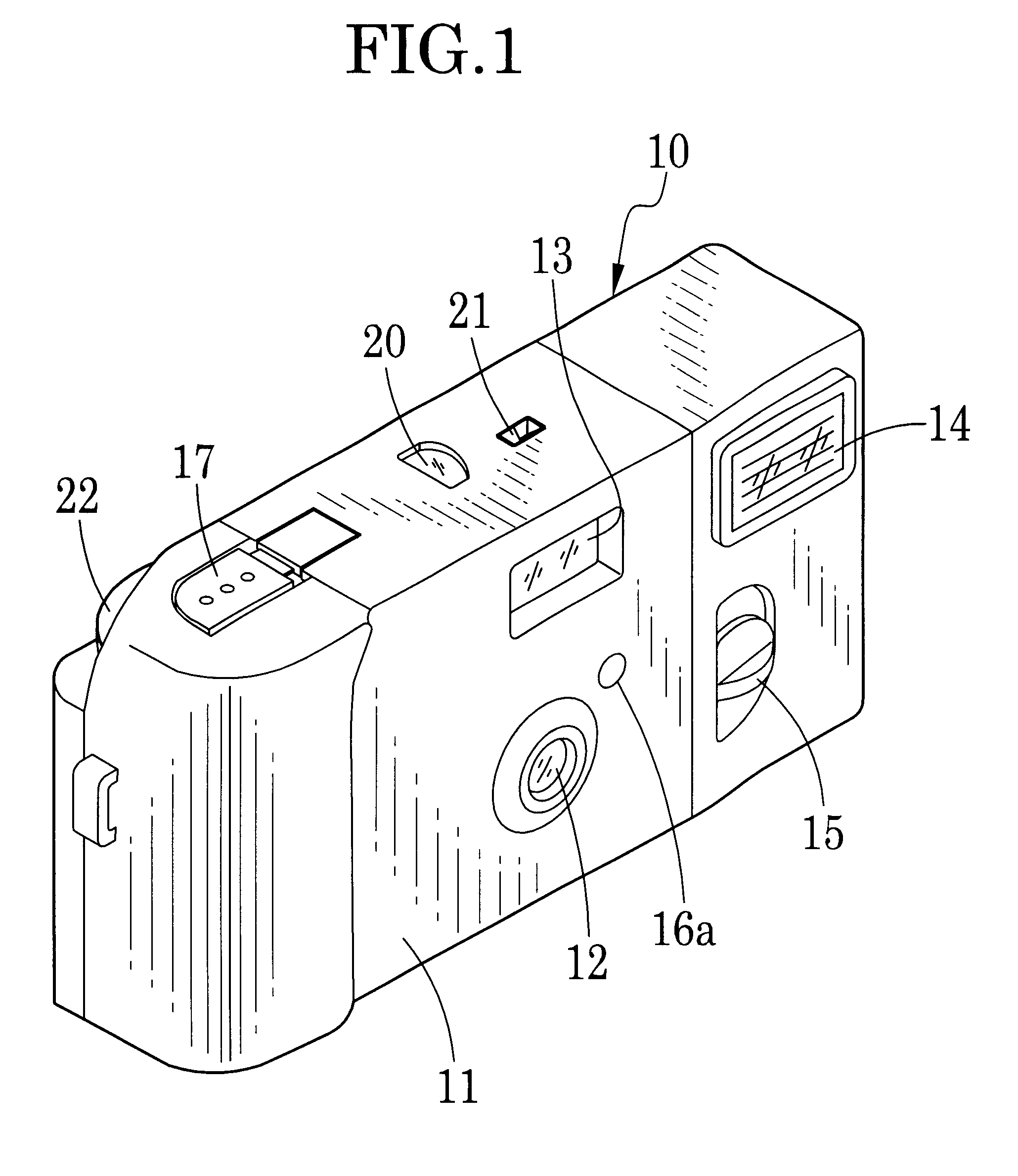Automatic exposure control device for a camera
a control device and camera technology, applied in the direction of exposure control, camera diaphragms, instruments, etc., can solve the problems of difficult to precisely measure the brightness of subjects, difficult to decide precisely whether subjects are equal to or more than the threshold level, and photo film is extremely overexposed
- Summary
- Abstract
- Description
- Claims
- Application Information
AI Technical Summary
Benefits of technology
Problems solved by technology
Method used
Image
Examples
Embodiment Construction
As shown in FIG. 1, a film unit is comprised of a housing 10 and a wrapping label 11 rolled around the housing 10. A taking lens 12, a viewfinder 13, a flash projector 14, a flash changeover plate 15 and a photometry window 16a are provided on front wall of the housing 10. A shutter button 17, a frame counter 20 and an indication light guide 21 are provided on a top wall of the housing 10, and a part of a winding dial 22 is exposed in a back wall of the housing 10.
As shown in FIG. 2, a photo film cassette 26 and a photo film 27 are previously loaded inside the housing 10. The housing 10 includes a basic portion 23, an exposure unit 24, a flash device 25, a front cover 30 and a rear cover 31. The exposure unit 24 and the flash device 25 are removably attached to the front side of the basic portion 23.
The basic portion 23 is comprised of an exposure opening 32 for determining the frame region of the photo film 27, a cassette chamber 33 for containing the photo film cassette 26, and a ...
PUM
 Login to View More
Login to View More Abstract
Description
Claims
Application Information
 Login to View More
Login to View More - R&D
- Intellectual Property
- Life Sciences
- Materials
- Tech Scout
- Unparalleled Data Quality
- Higher Quality Content
- 60% Fewer Hallucinations
Browse by: Latest US Patents, China's latest patents, Technical Efficacy Thesaurus, Application Domain, Technology Topic, Popular Technical Reports.
© 2025 PatSnap. All rights reserved.Legal|Privacy policy|Modern Slavery Act Transparency Statement|Sitemap|About US| Contact US: help@patsnap.com



